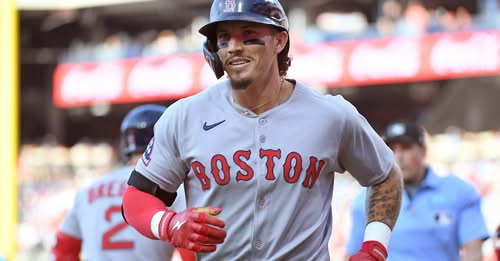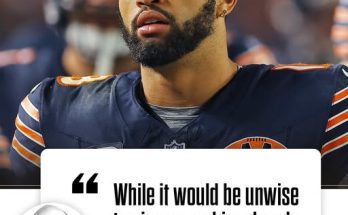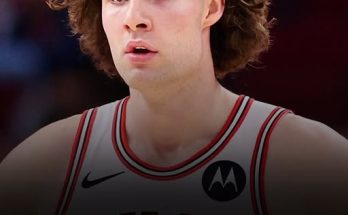The baseball world is always abuzz with rumors, trades, and strategic moves that can redefine team dynamics and the future of franchises. Recently, one such rumor has captured the attention of Major League Baseball fans and analysts alike: the San Diego Padres have reportedly made a major trade offer to the Boston Red Sox for outfielder Jarren Duran. This development, if it comes to fruition, could have far-reaching implications for both teams, shaping their rosters and competitive outlooks for the near future. The potential deal speaks volumes about the Padres’ ambitions and the Red Sox’s strategic considerations as the season progresses.
Jarren Duran has emerged as a notable player in the Red Sox outfield, showing flashes of both offensive and defensive potential since his debut. Known for his speed, athleticism, and aggressive style of play, Duran brings a unique energy that has excited Boston fans and management. However, his career has also been marked by inconsistency and struggles to fully harness his tools over a sustained period. For the Red Sox, a team that is often in pursuit of a perfect blend of veterans and young talent to remain competitive, Duran’s development curve has been watched closely. Whether he fits into the long-term plans or becomes a valuable trade asset is part of the ongoing organizational puzzle.
The Padres, on the other hand, have been aggressive in building a roster capable of contending for the World Series. With big names like Manny Machado, Fernando Tatis Jr., and Juan Soto anchoring their lineup, the Padres are not shy about making moves to bolster their depth and versatility. Their interest in Jarren Duran suggests they see untapped value and potential in the young outfielder that fits well with their team’s needs. Known for their analytical approach and willingness to take calculated risks on players with high upside, the Padres’ reported trade offer signifies a strategic effort to acquire a player who could add speed, defense, and a dynamic presence in the outfield.
Trade discussions involving a player like Duran inevitably include a complex calculus of value on both sides. For the Padres, the offer likely includes a package of prospects or younger players, possibly combined with major league talent, reflecting their commitment to immediate contention while maintaining a balanced roster. From the Red Sox perspective, the potential return must align with their vision for rebuilding or retooling their roster. Boston’s front office has shown a keen eye for talent and a willingness to invest in youth, so any deal that brings back promising prospects or players who can contribute right away would be appealing.
Jarren Duran’s skill set makes him an intriguing asset. His speed is one of his most prominent attributes, allowing him to create runs on the bases and cover significant ground defensively. In an era where athleticism and defensive versatility are highly prized, Duran’s ability to play multiple outfield positions with above-average range and arm strength enhances his value. Offensively, he has shown flashes of potential, combining contact hitting with occasional power and an aggressive approach at the plate. While his consistency has been a concern, a change of scenery and a new environment in San Diego might provide the fresh start needed to unlock his full potential.
From a strategic standpoint, the Padres’ interest in Duran could also be interpreted as part of a broader effort to diversify their offensive and defensive threats. In a division that includes strong teams like the Dodgers and Giants, having a well-rounded outfield with players who can impact games on multiple levels is essential. Duran’s speed and defense complement the Padres’ power hitters, giving them more options in late-inning situations and in constructing lineups that balance power with speed. This potential acquisition aligns with modern baseball trends emphasizing versatility, athleticism, and the ability to manufacture runs in various ways.
For the Red Sox, trading Jarren Duran would mark a significant decision, reflecting their evolving strategy in roster construction. Boston has been rebuilding, aiming to develop a core of young players who can sustain long-term success while supplementing them with veteran leadership. If the trade offer from the Padres includes prospects who fit the Red Sox’s developmental model or major league-ready players who can address immediate needs, the front office might view this deal as a win-win. The move would allow the Red Sox to capitalize on Duran’s value while continuing to shape their roster according to their vision for the future.
The reported trade offer has sparked considerable debate among fans and analysts about the value of Jarren Duran and the prospects involved. Some view Duran as a high-upside player whose potential is worth the investment, while others see him as a risky asset who has yet to prove he can be a consistent contributor at the highest level. Similarly, the players and prospects included in the trade package from the Padres have been scrutinized for their potential impact and fit within the Red Sox organization. Such trades often carry uncertainty, but they also highlight the dynamic nature of team building in MLB, where front offices must constantly weigh risk and reward.
Historically, trades between competitive teams like the Padres and Red Sox often go beyond just the players involved. They reflect a broader philosophical approach to baseball management, with the Padres leaning toward aggressive roster upgrades to capitalize on their current window, while the Red Sox balance rebuilding with strategic acquisitions to remain competitive. This trade rumor involving Jarren Duran is emblematic of these differing approaches converging. If executed, it would underscore the fluidity of roster management in modern baseball and the importance of seizing opportunities when they arise.
Another angle to consider is the potential impact on team chemistry and clubhouse dynamics. Both the Padres and Red Sox have cultivated strong team cultures, and integrating a player like Duran into the Padres would involve assessing how his personality and playing style mesh with existing leaders and team identity. Conversely, the players arriving in Boston would face similar challenges as they adapt to a storied franchise with passionate fans and high expectations. Such human factors, while intangible, often play a critical role in the success or failure of trades beyond just statistics and talent evaluations.
Financial considerations also play a role in trades of this magnitude. While neither Duran nor the players involved likely carry exorbitant contracts, the Padres and Red Sox must manage payroll flexibility to ensure they can invest in key areas without compromising future moves. The Padres, known for making big signings in recent years, must balance their payroll to maintain competitiveness while avoiding luxury tax penalties or financial constraints. The Red Sox, meanwhile, have been navigating the balance between veteran salaries and investing in their farm system. Trades like this allow teams to align their financial strategy with on-field goals.
Looking ahead, the outcome of this trade talk will depend on negotiations between the two clubs, the assessment of player medicals, and the timing of the deal. With the MLB trade deadline and offseason approaching, teams are constantly evaluating how best to position themselves for playoff runs or rebuilds. For the Padres, acquiring Jarren Duran could be a strategic move to enhance their playoff roster depth, while the Red Sox may see the deal as a chance to acquire foundational pieces or fill roster holes. Fans and analysts will be watching closely as more details emerge, hoping for clarity on a deal that could reshape both franchises.



